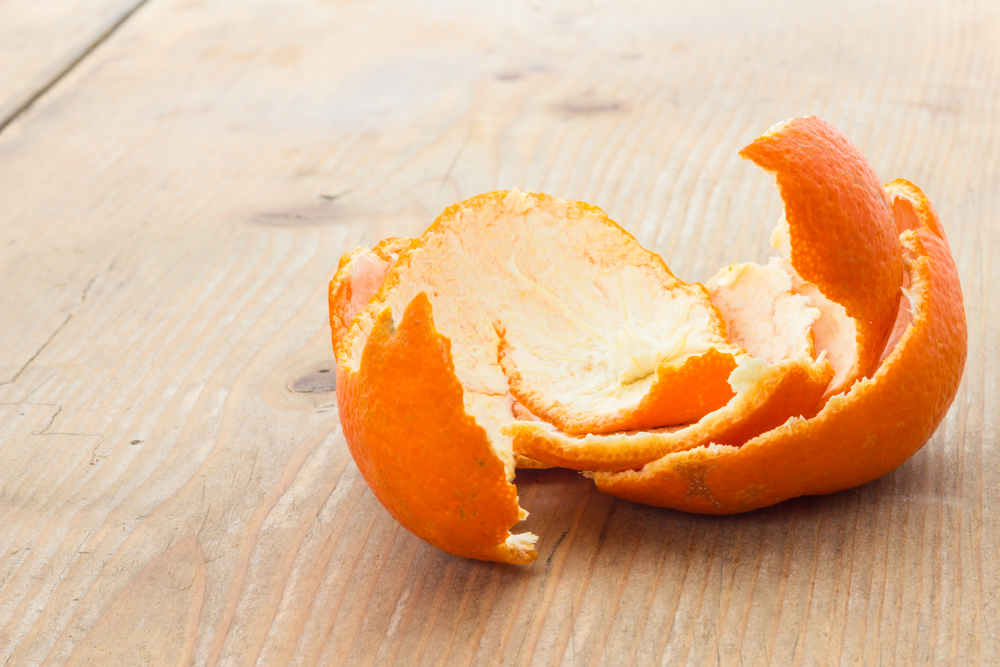The clementine season is well and truly open for our greatest pleasure. A consumption with numerous health benefits, which necessarily rhymes with dozens of peels. So many clementine skins too often end up in the trash, even though there are multiple ways to recycle them. Here are 8 of them, including a beauty tip and clementine recipes!
The first thing we do after eating a clementine is often to throw the skin in the trash. However, although acidic, it can enrich the compost and be used in many other ways. Here are several ways to recycle clementine peels at home.
How to use the skin of clementines?
1 – Salt, sugar or pepper tangy with clementine
In baking, clementine provides a very appreciated slightly tangy taste. You can thus make sugar with clementine zesta mixture that is easily concocted. To do this, mix a spoonful of clementine zest for the equivalent of a cup of sugar. Mix everything well, so that the oil from the peels permeates the sugar.
It is also possible to flavor your salt with clementinefor a very popular sweet and savory seasoning. To make clementine salt, dry the zest, then mix it with salt in an equivalent quantity.
Another way to make a clementine seasoning: mix pepper with dried and crushed zest.
2 – Clementine vinegar
Clementines and their peelings make it possible to make clementine vinegarideal for seasoning raw vegetables.
The recipe for clementine vinegar:
Ingredients: 175 ml of cider vinegar, 4 clementines, 1 teaspoon of honey.
- Take the zest from a clementine.
- Peel the 4 clementines.
- Separate the quarters of the clementines by removing the thin translucent skin that surrounds them.
- Place the zest and quarters in a jar.
- Boil the vinegar with the honey.
- Pour the mixture into the jar containing the zest and clementine quarters.
- Stir everything and close the jar.
- Let sit for 24 hours.
- Finally, mix the mixture before filtering it then pouring it into a previously sterilized bottle.
Your clementine vinegar is ready!
3 – A homemade scrub with clementine peels
Clementine is often used in cosmetics for the vitamin C contained in particular in its zest. To take advantage of it, why not make a homemade clementine scrub ? All you have to do is mix salt with the clementine zest, previously washed and then cut into small pieces. Gently rub your skin with this mixture and rinse.
Also read: Homemade sea salt scrub
4 – Clementine-scented cleaning products
Clementine peels can be used to perfume your household products. You can, after washing them, mix the clementine zest with your white vinegar if you usually use it to clean your home.
Pour a white vinegar pleasantly scented with clementine : add the zest directly to the vinegar, then let everything infuse for a good week. Then add an equal part of water and pour everything into a sprayer. A good way to clean your house while scenting it!

5 – A clementine air freshener
To pleasantly scent your interior, you can let the fruit peels dry in order to make a clementine potpourri. For more scent, also cut a few thin slices of clementine, also leaving to dry. Then mix everything with cinnamon sticks. A homemade potpourri that will diffuse a pleasant scent for many weeks.
It is also possible to perfume your clothes by placing dried clementine peels in a small closed cotton bag, to place inside your wardrobe or dressing room.
Another way to recycle clementine skins: use them to deodorize the oven or refrigerator. Place several dried peelings in an open container, which will then absorb bad odors.
Also read: Make a natural, toxic-free home fragrance
6 – Candied clementine peels
Clementine peels are just as good as the fruit… Especially when eaten candied! It is thus possible to cook clementine peels to preserve them. Here’s how to do it.
The recipe for candied clementine peels:
Ingredients: peelings of 6 clementines, 400 g of powdered sugar, 50 cl of water.
- Wash the skins of the clementines and cut them into thin strips.
- Place the peelings in a saucepan of cold water and bring to the boil.
- Turn off the heat, then drain the peels.
- Repeat this same operation twice, which helps remove the bitter taste from the peelings.
- Return the peels to a saucepan of cold water, add the water and sugar. Bring this syrup to a boil, then turn off the heat and wait for everything to cool.
- Repeat this operation twice.
- Cover the syrup, then let it sit overnight.
- The next day, return the pan to a low heat until the clementine peels become translucent. Then, remove the peels from the syrup with a fork and let them cool on a rack.
Gourmet tip : why not coat the barks with melted chocolate?
Also to test: Chocolate caramelized clementines recipe
7 – A herbal tea with clementine peels
Another way to enjoy the pleasantly tangy flavor of clementines: use the bark in an herbal tea or tea. To do this, simply cut the peels into thin strips and leave to dry, after washing them. You can also cut a thin slice of clementine, also leave to dry before infusing everything in a cup of hot water. Why not add a few dried rosemary leaves for a delicious rosemary-clementine herbal tea in autumn?

8 – Keep insects and animals away with clementine skins
In the garden, clementine peels can also be used to repel animals and insects, a way to fight against vegetable garden pests. All you need to do is place them directly on the soil of your vegetable garden, around the plants you want to protect. As they decompose, they will also enrich the soil with nitrogen. You can also make garlands of clementine peel, to display them at home or in the garden, the smell of clementine repelling mosquitoes !
consoGlobe also recommends…
Source: www.consoglobe.com


